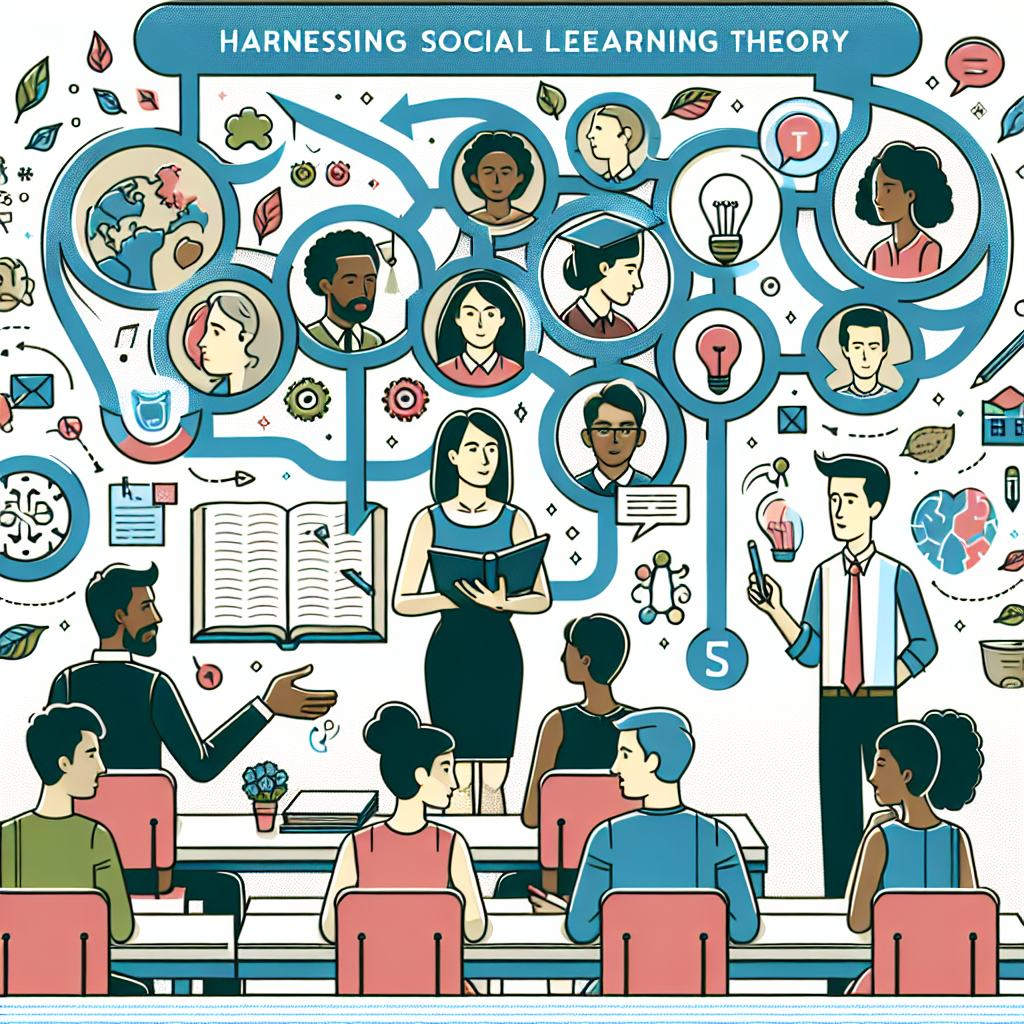
Introduction
In today’s rapidly evolving educational landscape, traditional teaching methods often fall short in engaging students and fostering deep learning. The shift towards more collaborative and interactive learning models is not just a trend; it’s a necessity. At the heart of this transformation lies an invaluable framework: Harnessing Social Learning Theory for Effective Education Strategies. This theory, pioneered by Albert Bandura, posits that people learn from one another through observation, imitation, and modeling. When effectively applied, it can revolutionize the learning experience by cultivating environments where students thrive.
Imagine a classroom where students not only absorb information but actively participate, share insights, and learn from each other’s experiences. This article delves into the core principles of social learning theory, provides actionable strategies for classrooms, and highlights case studies that illustrate its practical application. By the end of this journey, you’ll understand how to harness social learning theory to create effective education strategies that empower learners.
The Pillars of Social Learning Theory
Understanding Social Learning Theory
Social learning theory posits that learning occurs in a social context and that it is facilitated through observation of others. The core components include:
- Attention: Students must focus on the models being observed.
- Retention: Learners need to remember the behaviors they observed.
- Reproduction: Students will reenact the behavior when they feel capable of doing so.
- Motivation: The desire to replicate the behavior must be present, influenced by various factors, including rewards.
These elements underscore the importance of social interactions within educational settings, making Harnessing Social Learning Theory for Effective Education Strategies a crucial step for educators aiming to enhance student engagement and learning.
Building a Collaborative Environment
Creating a conducive learning atmosphere is essential for the principles of social learning theory to take root. Here are some strategies for building such an environment:
- Group Work: Implement collaborative projects that require teamwork and communication.
- Peer Teaching: Facilitate opportunities for students to teach each other, reinforcing their understanding.
- Class Discussions: Encourage open dialogue, allowing students to express opinions and learn from diverse perspectives.
Effective Education Strategies Using Social Learning Theory
Strategy 1: Live Demonstrations and Modeling
One of the most effective ways to harness social learning theory in education is through live demonstrations. When teachers or advanced learners model a skill, students benefit from visual and auditory cues.
Case Study: The Flipped Classroom Model
In a flipped classroom implemented at a high school in California, educators utilized video demonstrations to introduce new concepts, which students reviewed at home. This shifted in-class time to hands-on application and group discussions. The outcome was remarkable: engagement soared while comprehension improved by 40%.
Strategy 2: Implementing Social Media for Learning
Incorporating social media platforms into curricula can augment traditional learning methods.
Case Study: Using Twitter for Historical Analysis
A history teacher altered their approach by having students analyze historical tweets as if they were living in that time. Students observed and replicated how to analyze and interpret information collaboratively through this method, leading to deeper engagement and understanding.
Strategy 3: Gamification of Learning
Gamification taps into students’ intrinsic motivations to learn through reward-based systems.
Case Study: A Gamified Biology Course
A university professor redesigned their biology course to include game-like elements, such as points for participation and collaboration in labs. This strategy encouraged students to share knowledge and support each other in mastering complex concepts, resulting in an increase in overall course satisfaction.
The Role of Technology in Social Learning
Leveraging Digital Tools
Educators can enhance social learning through various technological platforms, enabling collaboration beyond classroom walls.
- Collaborative Platforms: Tools like Google Classroom and Microsoft Teams foster peer interactions.
- Virtual Reality: VR environments can simulate real-world scenarios, allowing students to learn through immersive experiences.
- Discussion Forums: Online forums encourage interactions that might not occur in person, catering to diverse learning styles.
| Technology | Application | Benefits |
|---|---|---|
| Google Classroom | Collaborative projects | Enhances peer learning |
| Virtual Reality | Immersive simulations | Engages multiple senses |
| Discussion Forums | Asynchronous discussions | Encourages thoughtful contributions |
Evaluating the Impact of Social Learning in Education
Metrics for Success
To truly understand the effectiveness of Harnessing Social Learning Theory for Effective Education Strategies, educators must evaluate the impact through various metrics:
- Student Engagement: Use surveys to measure involvement and interest in collaborative tasks.
- Academic Performance: Compare traditional versus social learning approaches to assess knowledge retention.
- Feedback from Students: Gathering qualitative feedback helps gauge students’ perceptions of their learning experiences.
Analysis of Metrics
The implementation of social learning strategies in a pilot program revealed significant increases in engagement and academic performance. By integrating feedback loops, educators can continually refine their strategies.
Challenges and Solutions in Applying Social Learning Theory
Common Obstacles
- Resistance to Change: Some educators may be hesitant to shift from traditional methods.
- Classroom Management: Maintaining a collaborative environment can be challenging.
- Technology Accessibility: Not all students may have equal access to digital tools.
Overcoming Challenges
Educators can tackle these issues by:
- Professional Development: Offering training to build confidence.
- Structured Guidelines: Providing clear expectations for group work.
- Accessibility Initiatives: Ensuring that all students have access to necessary technologies.
Conclusion
Harnessing social learning theory for effective education strategies is not just a theoretical endeavor; it’s a transformative movement that prepares students for a collaborative future. By implementing strategies rooted in observation, modeling, and social interaction, educators create dynamic learning environments that foster engagement, understanding, and retention.
Your journey towards adopting these methods can begin with small changes—integrating peer teaching, encouraging discussions, or utilizing technology. Remember, the goal is to create a culture of collaboration where students learn not just from their instructors, but from each other. As you reflect on these principles, consider the incredible potential of your classroom when you actively engage with Harnessing Social Learning Theory for Effective Education Strategies.
FAQs
1. What is social learning theory?
Social learning theory suggests that people learn from one another through observation and modeling, emphasizing the role of social interaction in the learning process.
2. How can I apply social learning theory in my classroom?
Start by incorporating group projects, peer teaching, and discussions to foster collaborative learning environments.
3. Can technology aid in implementing social learning?
Absolutely! Tools like Google Classroom and social media platforms facilitate collaborative learning and enhance interaction among students.
4. What are some common challenges in applying social learning theory?
Challenges include resistance to change, classroom management issues, and technology accessibility.
5. How can I measure the effectiveness of social learning strategies?
Use metrics such as student engagement surveys, academic performance comparisons, and qualitative feedback to evaluate the impact of implemented strategies.
In summary, adopting social learning theory can profoundly enhance educational effectiveness, fostering not only academic success but also crucial life skills such as collaboration and communication.














